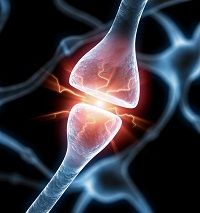Article
Chronic Pain: Another Piece of the Puzzle Uncovered
Author(s):
Competing theories have long been put forth to explain more about the cause of chronic pain, but a new study may finally have shed light on the mystery.
Â

Competing theories have long been put forth to explain more about the cause of chronic pain, but a new study may finally have shed light on the mystery.
Â
The interaction between the sensory and sympathetic nervous systems is poorly understood, however, it is suspected that it contributes to chronic pain. Hélène Beaudry, PhD, and her McGill University colleagues presented their findings at the 34th Annual American Pain Society Scientific Meeting in Palm Springs, CA.
Â
“We don’t know how these two systems work together,†Beaudry told MD Magazine. “It works for weeks in a row but we don’t know how.â€
Â
Beaudry explained that while the sensory is quite linear, the sympathetic system is very different. The sympathetic system may be the culprit of more than responding to emergency situations and the researchers hypothesized that sympathetic fibersplay a key role in painful conditions such as inflammatory arthritis and neuropathy.
Â
Previous research suggested that the interaction causes a release of some sort, but the specificshave yet to be pinpointed.
Â
“In chronic pain models, there’s destruction which makes it more difficult to study,†Beaudry said. Currently, the only available way to control neurons linked to pain is by injecting a sympathetic agonist. The team aimed to do the same with just the use of light.
Â
“To achieve the optical control of the firing activity of peripheral sympathetic fibers,†the researchers wrote. “We used transgenic mice expressing the excitatory opsin ChR2 in sympathetic neurons.â€
Â
The mice were induced with tamoxifen (2 mg/kg) for 10 days – a method deemed sufficient based on the results. Not only was the team able to provoke the neurons, but they could stop them from functioning as well.
Â
“What’s even more interesting is that we can exhibit or inhibit the neuron with the light,†Beaudry explained.
Â
The investigators plan to continue their research in this complex condition. “We will investigate the role of sympathetic sprouting in the development and maintenance of chronic inflammatory and neuropathic pain,†the study concluded.
Â





